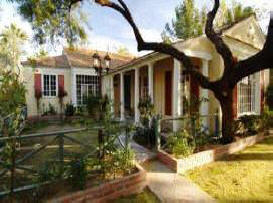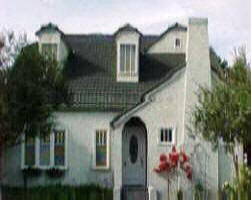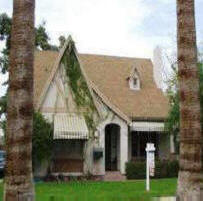|
The Early Days: 1870's to the 1930's
The Early Days: 1870's to the 1930's
The Modern Era: 1970's – Present
In its first seven decades, Tempe saw its population grow slowly but steadily. The city blocks surrounding the Mill Avenue downtown commercial district were developed as residential areas, as were the blocks east of the Territorial Normal School (later named Arizona State College and Arizona State University). San Pablo, a Hispanic settlement established before the founding of Tempe, was at the foot of Tempe Butte, east of downtown and north of the College.
The Maple Ash neighborhood is the only remaining pre-1940 neighborhood in Tempe; the others have been displaced by expansion of the downtown commercial district and Arizona State University. Some pre-1940 homes also survive in the Riverside and Mitchell Park East neighborhoods, which began as agricultural areas west of downtown.
The Boom Years: 1940's - 1960's
Tempe continued growing at a modest rate through World War II. When the war ended, Arizona's service and manufacturing economy flourished and propelled a dramatic population boom. Tempe's population tripled every decade from 1940 to 1970.
Residential developments sprang up on Tempe's outskirts to meet the tremendous demand for housing. The first new neighborhoods of the post-war boom catered to returning veterans and young families. Builders offered modest-sized pumice block homes on large lots at affordable prices. Early boom-era neighborhoods include University Heights, Hudson Manor, University Estates, and University Park. In the mid-1950's Tempe's new homes became more spacious, reflecting the demand for more rooms during the baby boom era, but they were still a bargain.
Today these post-war neighborhoods are among Tempe's most attractive and desirable residential areas, enjoying a "character" that is not often found in newer Valley neighborhoods. Many of these neighborhoods retained flood irrigation systems that were once used to water crops, providing deep watering for new vegetation. What started out as rows of treeless tract-style houses have become green, shady neighborhoods. Over the years, the once-identical homes have taken on the personalities of their owners, as some have been renovated while others have been maintained in their original condition.
The Modern Era: 1970's - Present
Though the pace of Tempe's growth slowed somewhat after 1970, residential subdivisions continued to replace farmland at a rapid rate. New neighborhoods ranged from traditional tract home developments to luxury custom homes on horse-sized property.
As the development of new neighborhoods pulled the city's population center to the south, Tempe's leaders made a commitment to reinvest in the historic downtown commercial district, which had fallen on hard times. A new City Hall was built on the site of the original near Mill Avenue, and a redevelopment district was established to refurbish historic downtown buildings and attract new commercial development.
By the late 1980's, Tempe's city limits had expanded to meet the boundaries of neighboring Phoenix, Scottsdale, Mesa, and Chandler, making it the only landlocked city in the Valley. As the 21st Century approaches, Tempe's residential areas are nearly all developed, enabling the City to concentrate on the task of preserving the quality of its finite supply of housing. Tempe's Neighborhood Services Division and its network of neighborhood associations were established to help the city's neighborhoods continue to age gracefully in the coming decades.
Info provided by the Tempe Neighborhood Services Division website.
https://.historiccentralphoenix.com
|



